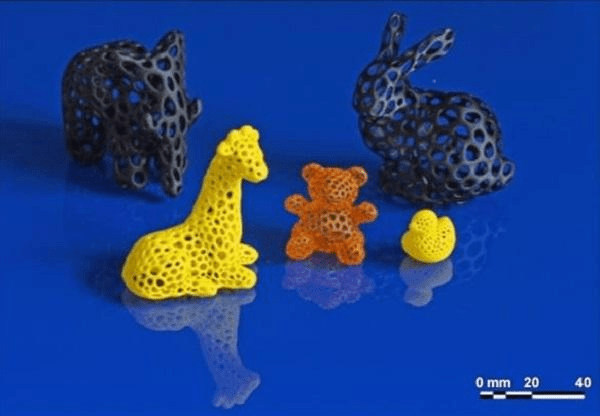Interested in 3D printers but don’t know which one to buy? If you’re looking for a worthy machine, visit Top 3D Shop and check out our 3D printer reviews, we’ll help you choose the machine you need!

The advantages of 3D printing over casting for small batch sizes are obvious, especially when it comes to products with complex geometries. In such cases, 3D printing is the simplest and most cost-effective solution. Surface quality and structural performance remain the only constraints.
Austrian researchers at the Technical University of Vienna offer an ingenious solution: a new 3D printer capable of printing with high viscosity polymers used in injection molding and combining laser (SLA) and projector (DLP) stereolithography technologies.
The development is carried out by a team led by Professor Jürgen Stampfl. The work of the research team as a whole is aimed at effectively adapting high-quality plastics to additive processes, improving surface quality and improving the mechanical characteristics of 3D printed products, since these are the moments that determine the scale of the introduction of 3D printing into production processes.
In particular, scientists are investigating the possibility of 3D printing with high viscosity impact-resistant polymers and are working on an additive process that allows them to obtain surfaces that are exceptionally high by the standards of modern 3D printing. For this, the developers not only adapted the materials themselves, but also created their own 3D printing device, which uses a DLP projector for the main illumination of the layers. Unlike conventional projector printers, the new device uses a hybrid illumination system, complementing the DLP projector with a laser system. According to scientists, this approach will help to achieve higher print resolution.
Significantly, the new process allows for a wide range of materials to be used. Typically DLP and SLA printers use inelastic thermosetting plastics such as methacrylates and epoxies. In this case, it is possible to use a wider range of polymers, including plastics with high viscosity and excellent impact resistance. Thus, this printer will be the first system capable of working with polymers previously only used in injection molding. In addition, the design allows to work with ceramics based on aluminum oxide, zirconium oxide and tricalcium phosphate, as well as bioglass.
The development opens up a number of new possibilities. The researchers believe that the thermomechanical properties of 3D printed products may outperform those of their cast counterparts. In addition, the technology allows printing with a resolution above 20 microns, allowing the creation of honeycomb structures with a wall thickness of 100 microns. The current version of the printer is capable of printing 144x90x160mm products. “It is possible to manufacture high strength parts exhibiting high elongation at break (that is, suitable for the production of snap-on components) and rubber-like, absorbent parts. In comparison with the materials used in conventional laser stereolithography, increased heat resistance, impact strength of 40 kJ / m² and elongation at break of 40% were achieved, ”the developers explain.
Thus, the new additive process can become an alternative to injection molding, allowing the creation of parts that can withstand high mechanical loads. In addition, the technology will retain the obvious advantages of additive manufacturing over casting in terms of the geometric complexity of models and production costs for limited batches or single items.